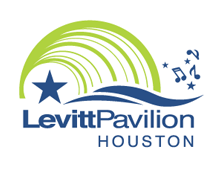Our beautiful neighborhood
Community neighbors
Levitt Pavilion Houston—an outdoor venue for live music—is an integral part of the Master Plan for the Gasmer Drive Site Redevelopment Project. The project area is contiguous to the Willow Waterhole Greenway, which is attracting more and more visitors as it becomes better known. Surrounding the 3-acre Pavilion site are 26 acres that have been rebranded Energy Capital Park and will be developed as a unique energy-themed park. Within the next few years, these three Houston destinations—Levitt Pavilion Houston, Energy Capital Park, and Willow Waterhole Greenway—will be connected so that visitors can easily enjoy all three in one outing.
Energy Capital Park
The rebranded Gasmer Drive Site Redevelopment Project area will surround Levitt Pavilion Houston and connect to the Willow Waterhole Greenway. The 29-acre property, purchased by the City of Houston in 2021, was once the Shell Oil Gasmer Technology Center. Brays Oaks Management District developed the park’s Master Plan at the request of the City of Houston.
Energy Capital Park will incorporate Shell’s oil derrick, offshore gantry, piping, and deserted buildings into its overall design.
Energy Capital Park will honor Houston’s legacy as a world leader in oil, gas, and renewable energy. The site will retain Shell’s old oil derrick, offshore gantry, test piping, and other energy-related structures. It will feature a 25-foot walking platform that will showcase the components typical of energy production. Its repurposed structures will include a community center and performing arts building. Commercial areas will include restrooms, parking lots, skate and dog parks, a food truck court, an outdoor cafe, a rentable private event space, and an outdoor marketplace—all connected to Willow Waterhole Greenway trails by pedestrian walkways.
Gasmer Drive Site Redevelopment project
Energy Capital Park, the rebranded Gasmer Drive Site Redevelopment project area, will surround Levitt Pavilion and connect to the Willow Waterhole Greenway. The 29-acre property, purchased by the City of Houston in 2021, was once the Shell Gasmer Technology Center. Brays Oaks Management District developed the park’s master plan at the City of Houston’s request.
Energy Capital Park will honor Houston’s legacy as a world leader in oil, gas, and renewable energy. The site will retain Shell’s old oil derrick, offshore gantry, test piping, and other energy-related buildings. It will feature a 25-foot walking platform that will showcase the components typical of energy production. Its repurposed structures will include a community center, performing arts building, and commercial areas such as restrooms, parking lots, skate and dog parks, and a food truck court, an outdoor cafe, a rentable private event space, and an outdoor marketplace—all connected to Willow Waterhole Greenway trails by pedestrian walkways.
Willow Waterhole Greenway
Willow Waterhole Greenway broke ground in 2004 and fully opened in 2016, with full connectivity of its six detention ponds completed in 2019. The 300-acre park, located behind Westbury High School, offers beautiful wet-bottom lakes and trails for conservation activities and outdoor recreation, including birdwatching, picnicking, fishing, canoeing, cross-country running, and free all-day music festivals, the next one scheduled for October 29, 2022. Its six detention lakes provide overflow flood water detention—up to 600 million gallons—for residents along Willow Waterhole Bayou and in the Brays Bayou Watershed.
Located in a section of Houston's Westbury neighborhood, the Willow Waterhole Greenway was built where contaminated brownfields and commercial buildings had been abandoned after years of flood damage. In 1999, the Greenway became a significant component of Project Brays, a $450 million project to improve flood control after a series of catastrophic Houston floods during the 1980s and 1990s.
Recognizing the Willow Waterhole area’s potential to be more than just a flood control zone, local citizens banded together in 2001 to create the nonprofit Willow Waterhole Greenspace Conservancy. They envisioned Willow Waterhole as a major new park that could revitalize the area and create expansive green spaces and lakes and provide conservation and recreational amenities. Since its opening, Willow Waterhole has become a popular destination for bird watching, picnicking, and hiking on its numerous walking trails. It also hosts music festivals, cross-country meets, scout troop meetings and events, Halloween festivities, and much more.


